Additional information
| Weight | 1 lbs |
|---|---|
| Dimensions | 4 × 4 × 4 in |
| Height | |
| Light | |
| Color | |
| Blooms | |
| Spread | |
| Zones |
Our 2024 plant list will be available in mid-Febrary 2024. Orders will begin to ship in May - June 2024 Dismiss
$30.00
Easily grown in average, medium to wet, well-drained soil in full sun to part shade. Prefers moist, acidic, fertile soils. Will grow in shade but becomes leggy.
Out of stock
| Weight | 1 lbs |
|---|---|
| Dimensions | 4 × 4 × 4 in |
| Height | |
| Light | |
| Color | |
| Blooms | |
| Spread | |
| Zones |
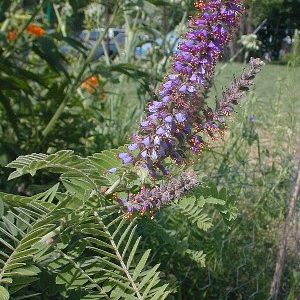
Host Plant – Silver Spotted Skipper
This is a lovely, and very long lived shrub of the prairie. The deep purple flower spikes rise above the silver-gray foliage to create a striking bloom display in June. The very deep taproot allows this plant to be very drought tolerant. Butterflies are attracted.
Available May – Mid May
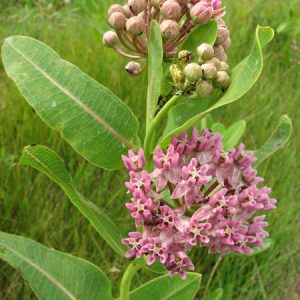
Winner of the 2015 Green Thumb Award for Best New Product!
Also known as Prairie Milkweed, Sullivant’s Milkweed is a long-lived perennial and a well-behaved relative of Common Milkweed. Very similar in appearance, it is less aggressive and an excellent choice for butterfly gardens. Prairie Milkweed grows best in a sunny, medium to medium-moist garden. The pinkish, mauve flowers are very fragrant and attract hummingbirds, bees, and butterflies. Sullivant’s Milkweed is listed as ‘threatened’ in Minnesota, Wisconsin, Michigan.
Available – May 2017
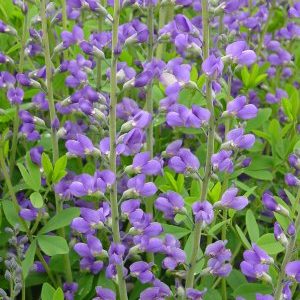
Wild Indigo Duskywing / Eastern Tailed-Blue / Orange Sulphur / Clouded Sulphur / Frosted Elfin / Hoary Edge
Blue spikes of pea-shaped flowers resemble the tall racemes of lupines in May and early June. A slow to mature, but very rewarding native garden perennial. Found in open woods, river banks and sandy floodplains, New York to Nebraska to Georgia.

Spicebush is a deciduous shrub with a broad, rounded habit which typically grows 6-12′ (less frequently to 15′) high in moist locations in bottomlands, woods, ravines, valleys and along streams. Clusters of tiny, apetulous, aromatic, greenish-yellow flowers bloom along the branches in early spring before the foliage emerges. Dioecious (male and female flowers on separate plants), with the male flowers being larger and showier than the female ones. Flowers of female plants give way to bright red drupes (to 1/2″ long) which mature in fall and are attractive to birds. Female plants need a male pollinator in order to set fruit, however. Drupes are very attractive, but are largely hidden by the foliage until the leaves drop. Thick, oblong-obovate, light green leaves (to 5″ long) turn an attractive yellow in autumn. Leaves are aromatic when crushed. The larva (caterpillar) of the spicebush swallowtail butterfly feeds on the leaves of this shrub.Lindera is named for the Swedish botanist, Johann Lindler.
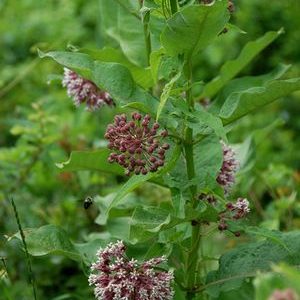
Asclepias syriaca Common Milkweed is the plant most people think of when they hear the word ‘milkweed’. This Michigan native occurs throughout most of the United States and thrives in almost any well drained soil and produces a profusion of fragrant mauve colored flowers in midsummer. The sweet scented flowers attract hummingbirds, butterflies, bees, and other pollinators and beneficial insects. Of all the milkweeds this is the easiest and fastest to establish, yet it is known to be invasive and must be used with care. This milkweed grows best in full sun and average to well-drained soil with no irrigation and will tolerate extreme conditions.
Available May 2017
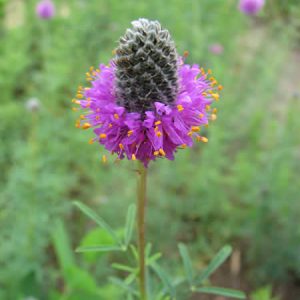
Host Plant – Sulphurs
Tiny rose-purple flowers in cylindrical, head-like masses at ends of upright wiry stems.
This is one of the most widespread of the perennial Prairie Clovers, identifiable by their cone-like flower heads. An excellent range species, with high protein content, Purple Prairie Clover decreases in abundance with overgrazing. A midwestern white-flowering species, White Prairie Clover has elongated flower heads and is only 2 (60 cm) tall. A white-flowering southeastern coastal plain species, D. carnea var. albida, has conspicuous green bracts within the heads.

Host Plant – Pipevine Swallowtail
Culture
Easily grown in average, medium, well-drained soil in full sun to part shade. Prefers rich, moist soil. Intolerant of dry soils. Cut back in late winter to control growth. Grows well from seed.
This deciduous, woody, climbing vine is an eastern American native which typically occurs in the wild in rich, moist woods and along streams. Can rapidly grow to 20-30′. An old-fashioned favorite that is grown for its large, heart-shaped, densely overlapping leaves (6-12″ long) which can quickly cover an arbor or trellis with attractive, glossy, deep green foliage. Commonly called Dutchman’s pipe because the unusual, 2″ long, yellowish-green flowers (each flaring at the calyx mouth to form 3 brownish-purple lobes) superficially resemble Dutch smoking pipes. Although the flowers make interesting conversation pieces, they are usually hidden by the dense foliage and are somewhat inconspicuous.

Host Plant – Baltimore Checkerspot
Spikes of elegant white flowers top shiny green foliage in late summer and early fall. Grows best in moist meadows, stream banks, and swamps. Favorite breeding site for the Baltimore Checkerspot Butterfly.
